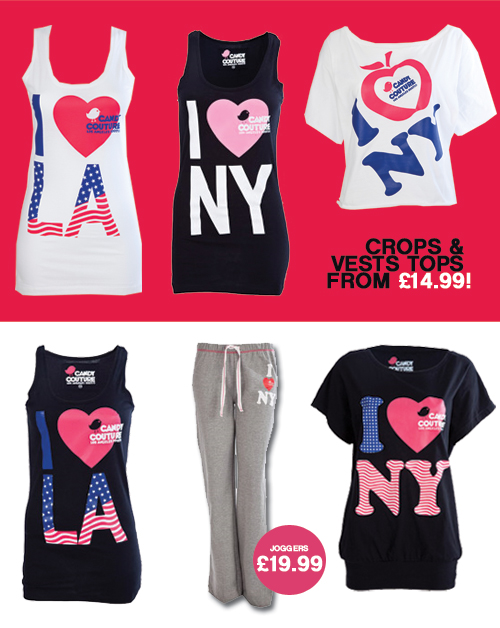High Street Fashion
Some typical fashion advertising

What is the role of fashion?
To the sceptic, the word 'fashion' is itself a kind of insult. You've probably read a newspaper article where something is derided for being a flash in the pan modern contrivance by the use of the word. Only last night, I heard a school head teacher say that modern teaching of homosexuality was making it 'fashionable.'
So it has acquired something of a negative connotation for a lot of people. And yet, despite that, people still spend good money on clothes that aren't merely functional, but reflect fasion trends.
Why is this?
Firstly, people's personalities are very important to them. There are few among us who don't have some kind of regard for ourselves and hope to make a decent impression on others. We're also acutely aware of the impact our appearance can have as part of that impression. While intellectually we might realise that it just shouldn't matter, we all fall prety to judging the book by its cover.
So fashion is a part of our personality. What we wear says something about us. It might say that we are a confident, outgoing person who is unafraid of wearing bright colours. Or it might indicate that we belong to some particular cultural movement (think of the mods, goths or other music-led subculture). It could even say something about our ethnic heritage - a trend seen in the adoptation of national flags and symbolism on t-shirts and jackets.
And then of course, there is the influence of money. A designer label carries a premium price tag. Not for nothing do many expensive names come accompanied with their logo displayed prominently on chests, legs and even backsides. These are important social signals which all of us notice at a subconscious level and ignore at our peril in some social situations.
What is the role of "high fashion"?
Things we see in our newspapers from the catwalk often seem outlandish and bizarre. Few of us would wear rubber or fishnet or conical hats or 12 inch platforms, and yet the media devote acres of coverage to these designs during fashion weeks throughout the world.
In effect, these designs represent the cutting edge in various ways. Firstly, they represent new visual styles - ideas and colour combinations that have never been seen before. The bold and imaginative use of a particular hue can set new ideas sparking in the minds of designers and so prove to be influential on fashion as a whole.
All this seems very distant from the high street fashions we see every day. In fact, these designs are very influenced by what happened on the catwalks a few months before. While that dramatically slashed hemline might just be too outré for anyone who isn't stick thin or fabulously wealthy and confident, the idea of the angle will be taken up by the designers who design for the high street chains.
And so what started out as a stupendously unlikely looking piece of fashion on a catwalk in Paris in January can end up being reflected in much more humble workaday fare from the likes of Topshop when August rolls around.
Brands
High street brands are less high-falutin' version of the big designer labels. A suit by Guy Laroche or Alexander McQueen might command a fabulous price tag that is far from the reach of mere mortals in Doncaster or Bristol. Despite that, people look to brands to help them make purchasing decisions. A big fashion house name can be thought of as an equivalent to a Ferrari or Rolls Royce - exclusive and expensive. At lower price points, there are a mass of competing brands, and these are the brands that are most common on our high streets.
Most high street fashion chains look to become a brand in themselves. TopShop and Burtons are not just the names of shops, but also brands of clothing. With these brands come expectations of quality and price point. Primark is a brand that is primarily associated with a low price point, and concomitant levels of quality. Someone like Next, on the other hand is pitched slightly higher, and commands a higher price.
Most fashion companies dedicate a lot of time in both their products and advertising in order to establish a recognisable brand name and thus capture a piece of the market.
Popular lines and styles
In terms of what can loosely be classed as 'designer clothes', the most popular items on the high street these days are t-shirts, jackets, dresses and jeans.
Increasingly, many workplace are adopting a more casual policy towards dress and so smart but relaxed clothing styles are increasingly popular. Current trends are currently being influenced heavily by the styles of the 1980s, so jeans are often cut very tightly - particularly for women - and t-shirts are being decorated with large, bold colours and slogans. Sleeveless, baggy tees as worn by George Michael in the seminal video for Wake Me Up (before you Go) are hugely influential and informed by what could loosely be called a pop sensibility.
Jeans are not merely tight, but tapered towards the ankle and often worn short to reveal inches of bare calf above brightly coloured socks to finish the 80s feel. At the extreme end of the scale, such unlikely items as sweatbands and sun visors are popular with those who really want to the bring out the 80s in themselves, and the likes of Nike and Adidas have gleefully re-released designs that were last popular nearly quarter of a century ago!








